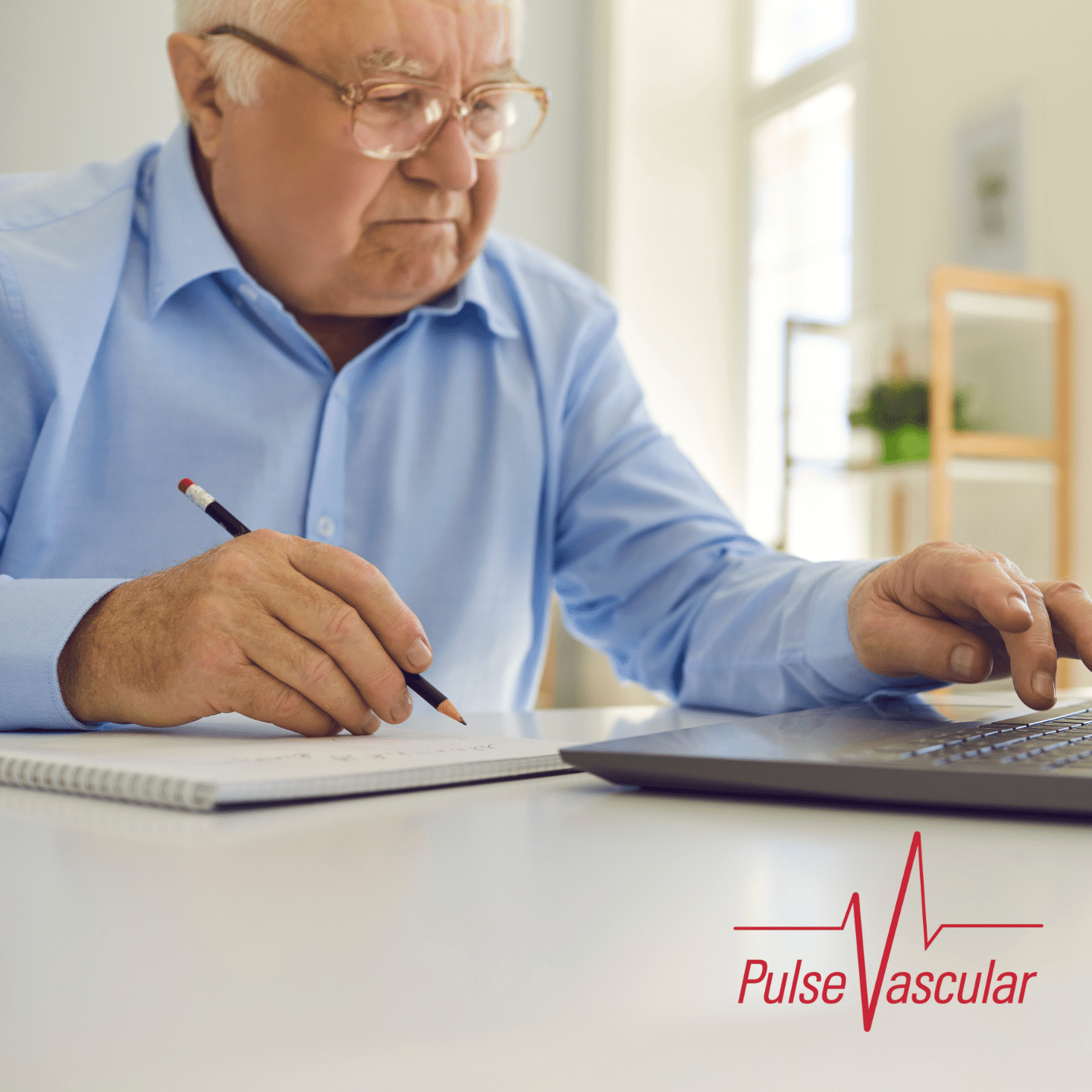
A sedentary lifestyle is increasingly recognized as a major health risk—some experts even compare it to smoking in terms of its negative impact on the body. For men, prolonged sitting can contribute to Peripheral Arterial Disease (PAD) by reducing circulation and increasing the likelihood of plaque buildup in the arteries.
How Sitting Affects PAD Risk
- Reduced blood flow – Sitting for long periods slows circulation, increasing the risk of arterial blockages.
- Higher cholesterol & blood pressure – A sedentary lifestyle is linked to elevated cholesterol and hypertension, both of which contribute to PAD.
- Increased risk of diabetes – Lack of movement can lead to insulin resistance, a key factor in PAD development.
- Muscle weakening – Sitting too much can lead to muscle atrophy, making it harder for the body to maintain healthy circulation.
Breaking the Cycle
The good news? Small changes can make a big difference:
- Stand up and move every 30 minutes – Even short walks help improve circulation. Check out these tips for getting moving each day: Walk. Run. Dance. Play. What’s your move? – Move Your Way | odphp.health.gov
- Incorporate daily exercise – Activities like walking, cycling, or swimming can reduce PAD risk.
- Use a standing desk – Alternating between sitting and standing can improve vascular health.
- Stretch and strengthen – Leg exercises help maintain muscle function and blood flow.
If you spend long hours sitting, consider making movement a priority—it’s one of the best ways to protect your arteries and overall health!
Other Consequences of a Sedentary Lifestyle
A sedentary lifestyle can lead to a range of health risks, some of which may not be immediately obvious. Here are some of the most concerning effects:
Physical Health Risks
- Obesity – Sitting for long periods reduces calorie burning, increasing the risk of weight gain.
- Heart disease – Prolonged inactivity is linked to high blood pressure, high cholesterol, and increased risk of heart disease.
- Type 2 diabetes – Lack of movement can lead to insulin resistance, raising the risk of diabetes.
- Poor circulation – Sitting too much can slow blood flow, increasing the risk of blood clots and varicose veins.
- Weakened muscles and bones – Inactivity can lead to muscle atrophy and weaker bones, increasing the risk of osteoporosis.
Mental Health Risks
- Increased stress and anxiety – Lack of physical activity can contribute to higher stress levels and anxiety.
- Depression – Studies suggest that sedentary behavior is linked to a higher risk of depression.
Other Risks
- Higher risk of certain cancers – Prolonged sitting has been associated with an increased risk of colon, breast, and uterine cancers.
- Premature death – Research suggests that excessive sitting can raise the risk of early mortality, even for those who exercise regularly.
The good news? Small changes—like standing up every 30 minutes, taking short walks, and incorporating regular exercise—can significantly reduce these risks. Movement matters.
At Pulse Vascular we can help you break the cycle of a sedentary lifestyle. Early intervention is key to the best outcomes. Check your symptoms online today!
